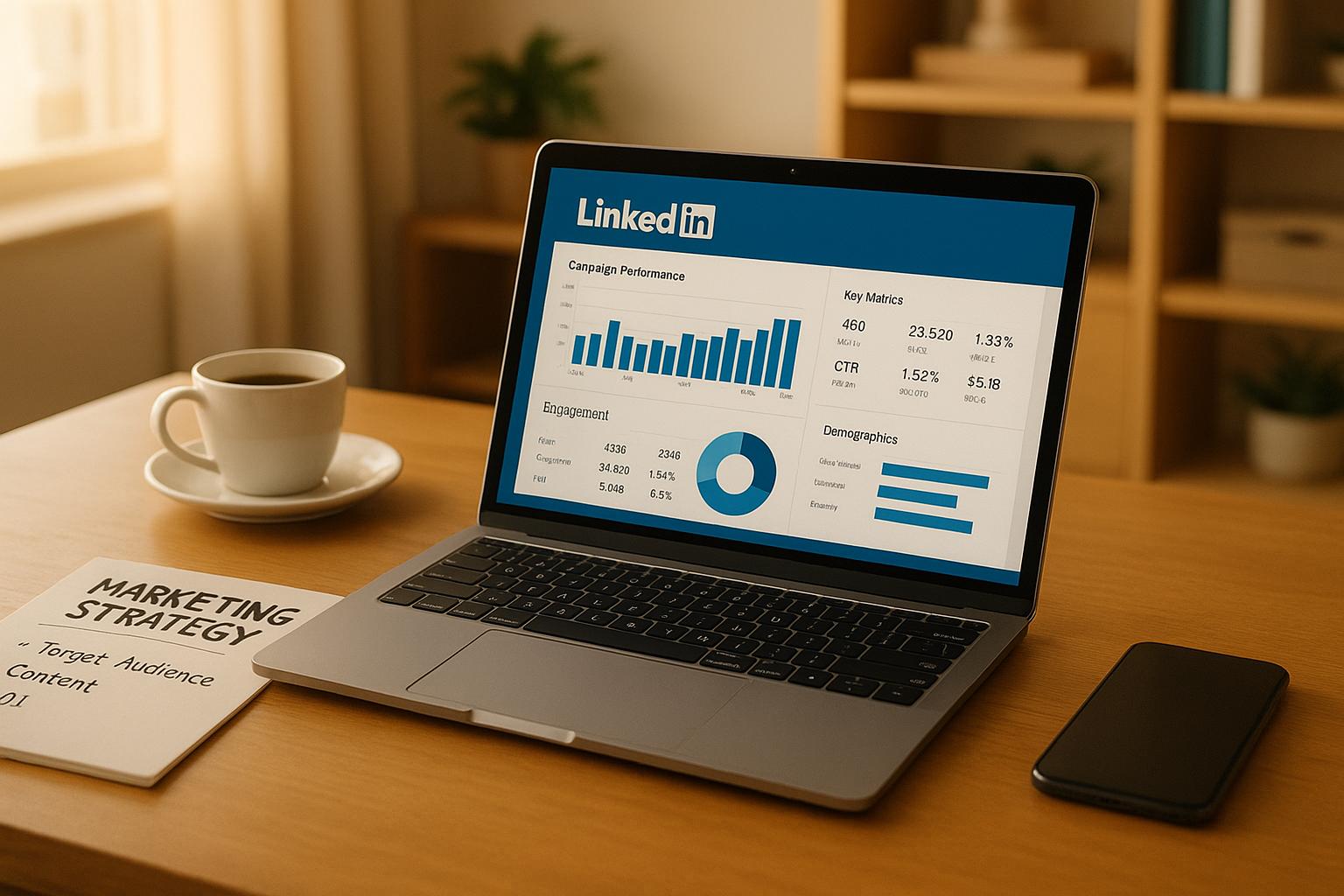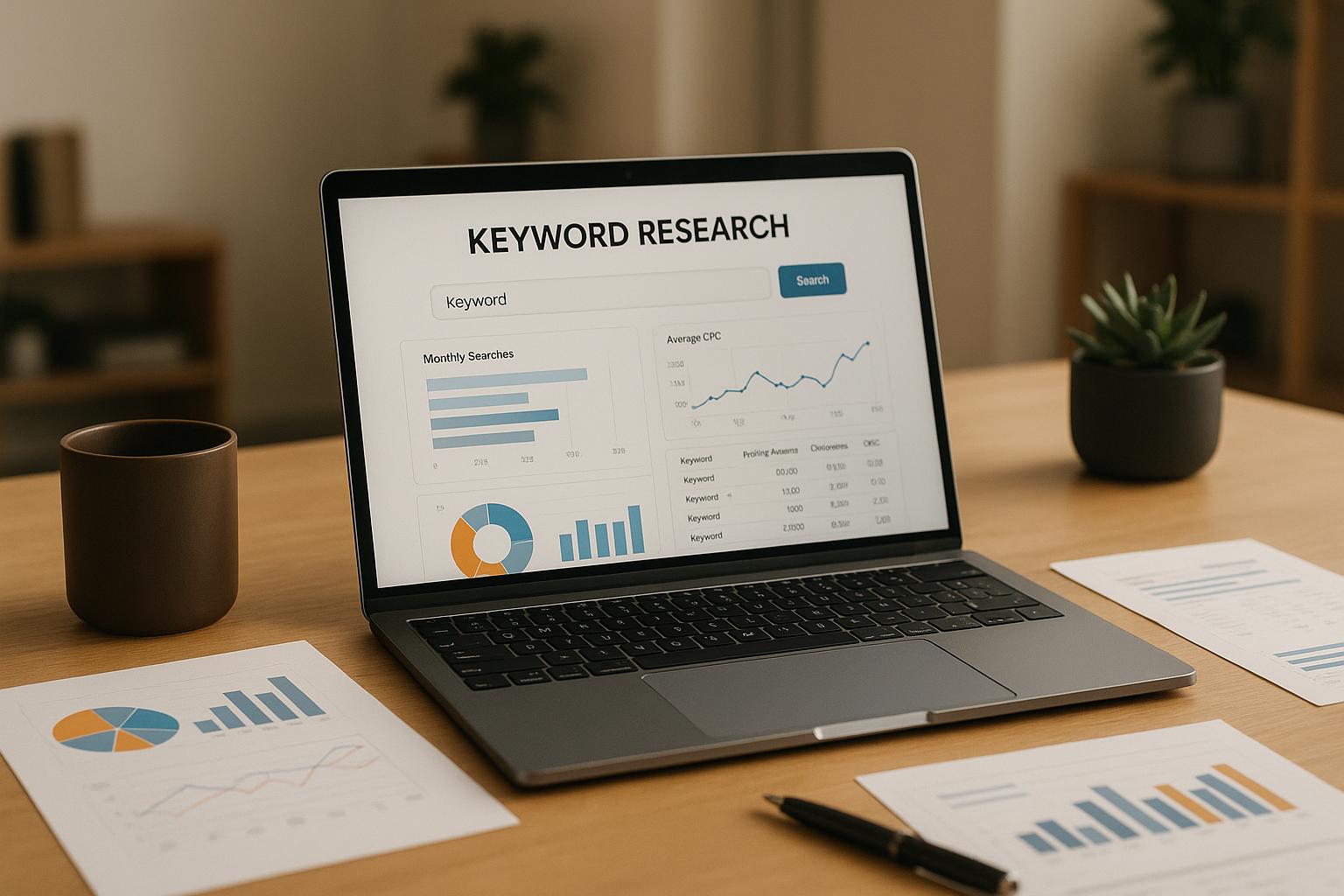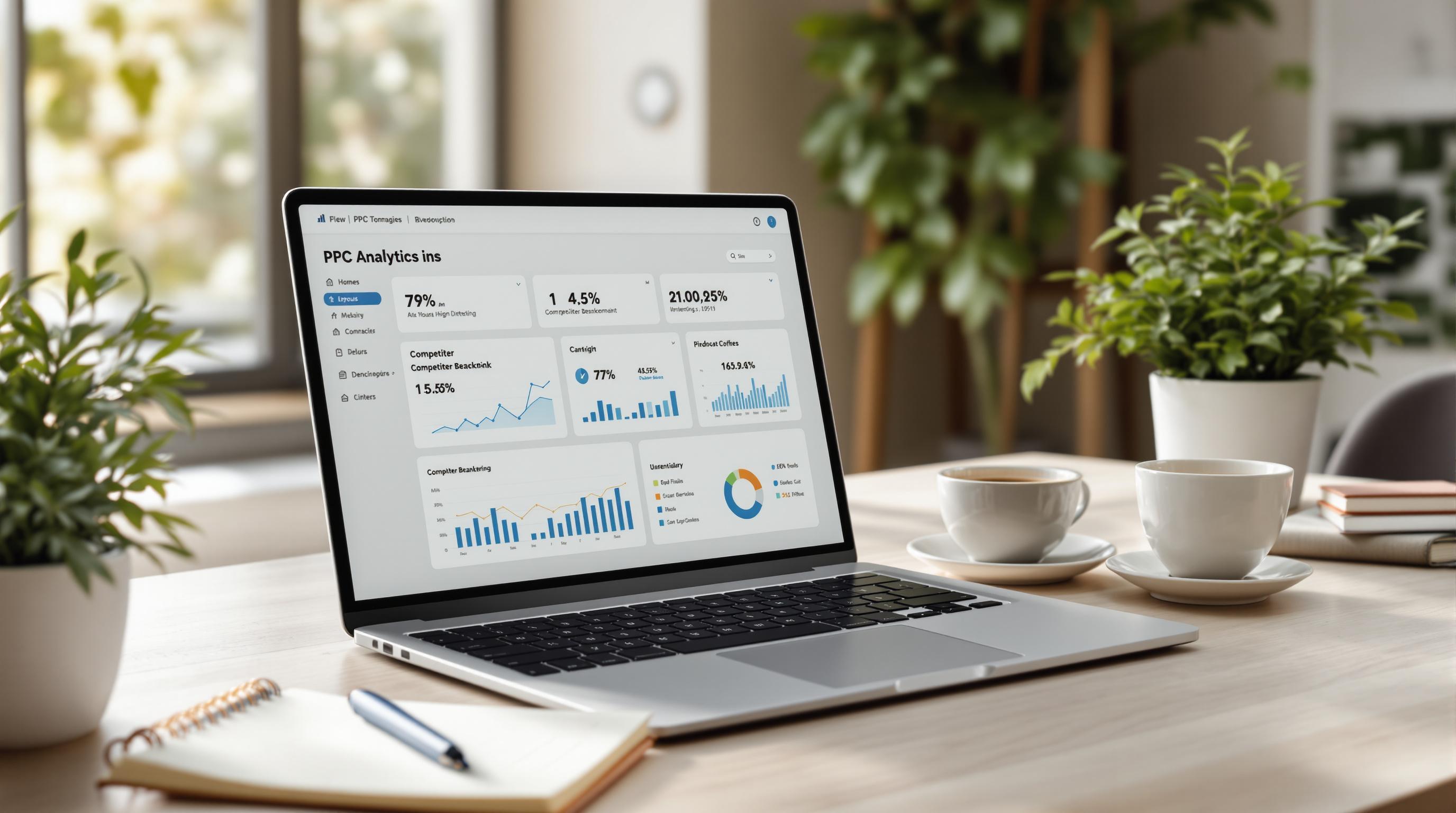Custom audiences in Google Ads let you target specific user groups based on behaviors, interests, or data like email lists and keywords. This approach helps you reach both existing and potential customers more precisely. Here's a quick summary of how to create and use them:
-
Types of Custom Audiences:
- Custom Intent: Target users actively searching for products or services.
- Custom Affinity: Focus on broader interests and hobbies for brand awareness.
- Customer Match: Retarget existing customers using your data.
- In-Market Audiences: Reach users ready to make a purchase.
-
Steps to Create Custom Audiences:
- Go to Audience Manager in Google Ads.
- Define audience parameters using keywords, URLs, and apps.
- Save and apply the audience to your campaigns.
-
Best Practices:
- Use specific keywords relevant to your audience's intent.
- Combine multiple data points for better precision.
- Regularly monitor and update audiences to maintain performance.
Custom audiences enable you to refine your campaigns and improve ad performance by targeting the right people at the right time. Regular updates and analysis are key to staying effective.
Google Ads Custom Segments - What, why and how to create them
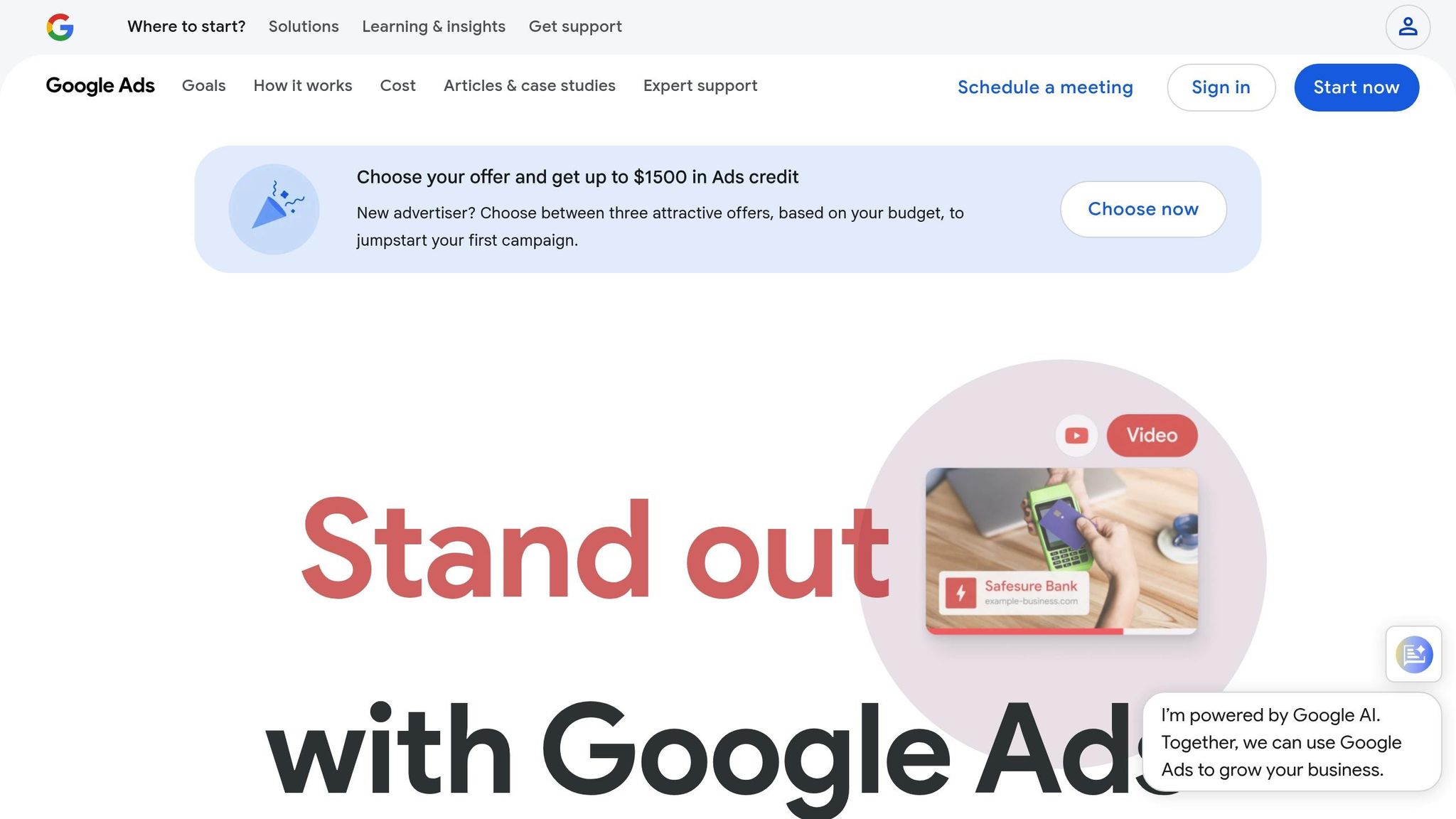
Types of Custom Audiences in Google Ads
Google Ads offers a variety of audience types, each tailored to help you meet specific campaign goals and refine your targeting. Knowing how and when to use these audiences can make all the difference in connecting with the right people at the right time. Let’s break down the options.
Custom Intent Audiences
Custom Intent Audiences are designed to target users who are actively searching online for products or services related to your business. You create these audiences by adding keywords, URLs, or app names that reflect the behavior of your ideal customer. These audiences are perfect for reaching people who are already showing intent to purchase. They work well for Display, Discovery (Gmail), and Video (YouTube) campaigns, but they don’t apply to Search or Shopping campaigns. This makes them especially useful for engaging potential customers while they browse relevant content or watch videos.
Custom Affinity Audiences
Custom Affinity Audiences focus on users' broader interests, hobbies, and lifestyles. These are ideal for campaigns aimed at building brand awareness. For example, a company selling running shoes could target interests like "marathon training" or "fitness enthusiasts" by selecting websites and apps related to training schedules, race events, or fitness tips. This approach helps introduce your brand to new audiences and attract them into your marketing funnel.
Customer Match Audiences
Customer Match Audiences let you retarget people who already have a relationship with your business. By uploading your customer data - like email addresses, phone numbers, or user IDs - you can show tailored ads to existing customers or leads. This strategy is great for encouraging repeat purchases or for using Google’s machine learning to find new, high-intent users who share similarities with your current customers. It’s an effective way to leverage your first-party data for both retention and acquisition.
In-Market Audiences
In-Market Audiences are all about reaching users who are actively researching products or services and are close to making a purchase. For instance, if someone is comparing features of health products online, you can target them with ads that align with their search activity. This audience type is especially effective for driving conversions because it focuses on users at the bottom of the sales funnel. Google’s machine learning identifies these high-intent users based on their recent online behavior, ensuring your ads reach those ready to buy.
How to Create Custom Audiences Step-by-Step
Now that we’ve covered the basics of audience types, let’s dive into the step-by-step process for creating custom audiences in Google Ads.
Access Audience Manager
Start by heading to the Audience Manager, which serves as the control center for managing your audience segments. To get there, click on the "Tools" icon in your Google Ads account, navigate to the "Shared Library" section, and select "Audience Manager". Alternatively, you can access it through the "Campaigns" tab by opening the "Audiences, keywords and content" section and selecting "Audiences".
Once inside, you’ll find several sections, including "Your data segments," "Audiences," "Custom segments," "Combined segments," "Your data insights," and "Settings". These tools give you everything you need to fine-tune your targeting strategy.
Next, move on to setting up your audience parameters.
Set Audience Parameters
This is where you define exactly who your ads will target. Taking the time to carefully set these parameters ensures your campaigns reach the right people.
When creating custom segments, you’ll use three key criteria: keywords, URLs, and apps. Think about the words your ideal customers search for, the websites they frequent, and the apps they use regularly.
- For keywords, aim for smaller, focused lists rather than large, general ones. If you’re targeting users further down the buying funnel, prioritize long-tail keywords and phrases that reflect clear intent to purchase. On the other hand, short-tail keywords are more effective for broad awareness campaigns.
- For example, a coffee shop owner could target users who frequent nearby gyms or bookstores.
While building your keyword list, use the volume indicator to ensure your targeting isn’t too broad or too narrow. Also, think about how your ad copy aligns with the keywords and what should trigger your ad.
Save and Apply Custom Audiences
Once your audience parameters are set, it’s time to save and put them to work in your campaigns.
Give each audience a clear, descriptive name to make it easy to identify later. A good naming system can help you differentiate between interest-based and search-based audiences. For instance, you might label one audience "searched for [keyword]" and another "interest [keyword]".
Click "Create" or "Save" to finalize your custom audience. After saving, navigate to your campaign settings and select the "Audiences" section. From there, choose "Select an audience" and pick your newly created custom audience.
If you’re running campaigns across multiple platforms like video, discovery, or Gmail, consider creating separate lists. For example, one list could target users with general interests, while another focuses on those searching for specific terms. This segmentation allows you to fine-tune your targeting and improve campaign performance.
Custom audiences give you the flexibility to duplicate keywords across lists and rename them to create smaller, more targeted groups. This approach not only helps you pinpoint what drives conversions but also gives you greater control over your ad spend.
Finally, monitor and adjust your audiences regularly using Google Ads data to keep your campaigns optimized.
sbb-itb-89b8f36
Best Practices for Custom Audiences
Once you've set up your custom audiences, the next step is to fine-tune them for optimal performance. Here are some proven strategies to help you get the most out of your campaigns.
Use Relevant and Specific Keywords
Choosing the right keywords is critical. Focus on terms that are relevant, have high search volume, and align with what your audience is actually searching for. Dive into your data to uncover the specific search terms your audience uses. This ensures your keyword strategy is based on real user behavior, not guesswork.
Tools like Google Ads Keyword Planner can be a great resource. By entering related words or your website URL, you can discover new keyword ideas. Aim for a balanced mix of short-tail and long-tail keywords. While short-tail terms can broaden your reach, long-tail phrases often attract users with clear purchase intent. Don’t forget to exclude irrelevant keywords to improve the quality of your clicks.
Striking the right balance between high-volume and niche keywords is key. High-volume terms help you reach a broader audience, while more specific keywords target users who are closer to making a decision.
Combine Multiple Data Points
Keyword research is just the beginning. To refine your targeting, layer additional data points for even greater precision. Google Ads allows you to create custom segments using relationships like AND, OR, or NOT between audience groups. For example, if you sell mobile accessories, you could target users who’ve shown interest in multiple product categories - like phones, headsets, and chargers - by using the “Narrow your segment (AND)” option.
Layering audiences helps you focus on users with the highest potential value. Use observation layering to bid more aggressively on these high-value users without limiting your overall reach. Keep an eye on reach estimates, which show the potential impressions for your combined audience. This will help you avoid creating segments that are too narrow or overly broad.
Additionally, the "Exclude segments (NOT)" option can be a powerful tool. Use it to filter out underperforming audiences or those that aren’t relevant to specific campaigns.
Monitor and Update Regularly
Custom audiences are not a "set it and forget it" strategy. To maintain their effectiveness, you need to monitor and update them regularly. User behaviors and interests shift over time, so keeping your audience data fresh is essential.
Analyze performance data from Google Ads to see how different audiences engage with your campaigns. Use this information to refine your approach - add new high-performing segments, remove those that aren’t delivering results, or tweak bid adjustments to focus on the most valuable users.
Leverage tools like conversion tracking and attribution models to measure the impact of each audience on your campaign. This helps you allocate your budget more efficiently across your custom audiences. Regularly review your bid strategy to ensure you’re maximizing your return on investment.
Establish a schedule - monthly or quarterly, depending on your campaign size - to evaluate and refresh your custom audiences. This consistent approach keeps your campaigns efficient and sets the stage for more advanced PPC strategies in the future.
Using Top PPC Marketing Directory for PPC Campaigns
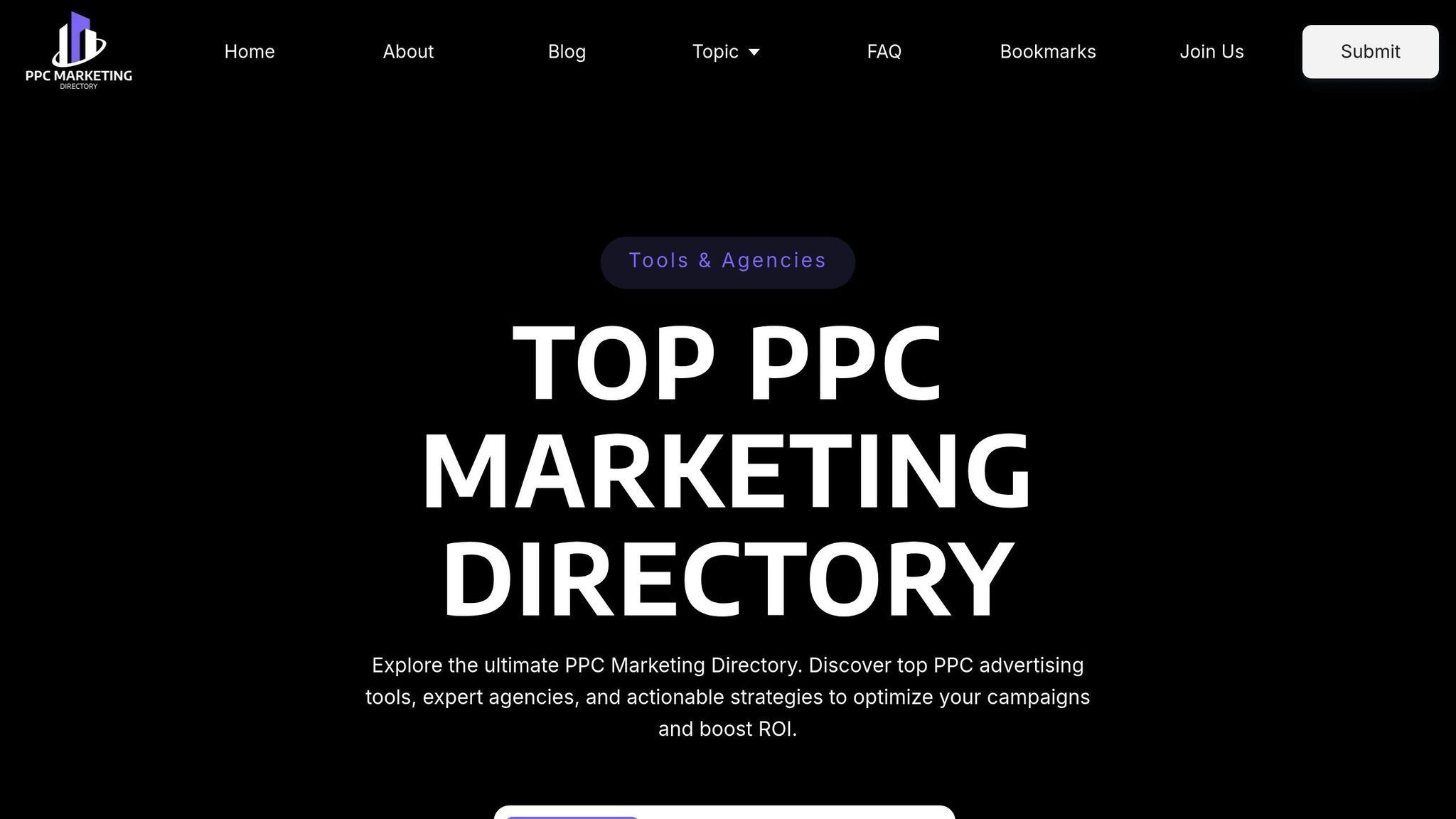
Creating custom audiences is just one piece of the puzzle when it comes to running successful PPC campaigns. The Top PPC Marketing Directory connects you with specialized tools and agencies designed to boost your Google Ads performance.
Find PPC Tools and Agencies
Custom audiences are great for targeting, but pairing them with the right tools and expert partners can take your campaigns to the next level. This directory simplifies the process of finding verified PPC tools and agencies that specialize in audience targeting and ad optimization. Instead of spending hours researching, you can quickly compare options tailored to improve your Google Ads results.
When choosing an agency from the directory, prioritize those that offer more than just basic ad management. Industry experts suggest working with agencies that provide a full range of services, such as landing page optimization, content creation, and high-quality ad production (including copywriting, graphics, and video content).
Experience in your industry also plays a critical role. The right agency will have a deep understanding of market trends, consumer behavior, competition, and even regulatory requirements. The directory allows you to filter agencies by their areas of expertise, helping you find partners who understand the specific challenges and opportunities within your market.
Once you've chosen the right tools and agencies, it's time to focus on how these resources can enhance your campaign management.
Improve Campaign Management
To amplify the success of your custom audience strategies, integrating advanced PPC tools is essential. The directory gives you access to solutions that simplify analytics, bid management, competitor research, keyword tracking, and overall ad optimization. These tools not only save time and money but also improve your campaign's ROI.
Key features like bid management, ad performance tracking, and audience insights are all covered. These tools allow you to fine-tune your custom audience segments, ensuring that your targeting is as effective as possible.
Managing PPC campaigns in today’s complex digital world can be overwhelming - 35% of marketers report struggling with the ever-changing digital landscape. The directory steps in as a reliable resource, connecting you with proven tools and expert advice to navigate these challenges.
Performance tracking becomes especially critical when juggling multiple custom audiences. With the directory's featured tools, you can measure the effectiveness of each audience segment, allocate your budget more strategically, and identify the best-performing combinations of targeting parameters.
It’s worth noting that traffic from PPC campaigns converts 50% better than organic traffic. To fully leverage this advantage, you need the right tools and expertise. The Top PPC Marketing Directory provides everything you need to achieve higher conversion rates through well-executed custom audience campaigns.
Conclusion
Custom audiences offer a way to fine-tune your targeting efforts in Google Ads. By using the Audience Manager, you can create audience segments tailored to your goals and apply them effectively to your campaigns.
The key to success? Precision. Adding demographic filters helps narrow your focus, while aligning with relevant behaviors and interests ensures your ads reach the right people - those most likely to take action.
Once your custom audiences are set up, keeping them effective requires ongoing attention. Regularly monitoring performance and making adjustments is crucial as user behaviors and interests shift over time.
For additional support, consider using specialized PPC tools and resources available through the Top PPC Marketing Directory. This platform connects you with bid management tools, performance tracking solutions, and agencies that understand the nuances of audience targeting.
Start building your custom audiences now. The formula for success lies in consistent testing, tracking, and refining as your business grows and your audience evolves.
FAQs
How can I combine custom audiences in Google Ads to improve campaign performance?
To get better results from your Google Ads campaigns, try combining custom audiences by creating custom segments with logical operators like AND, OR, or NOT. This approach lets you zero in on specific customer groups based on their behaviors and interests.
For instance, you can refine your targeting by layering audiences such as in-market, remarketing, and affinity audiences. You can also exclude segments that don't align with your goals to make your ads even more relevant. Experiment with different combinations regularly to discover what works best for your campaign and boost your return on investment (ROI).
How can I keep my custom audiences in Google Ads updated and optimized as user behavior changes?
To ensure your custom audiences remain effective, it's crucial to regularly review performance data and tweak your audience settings to reflect current trends and user behavior. Implement dynamic audience updates to automatically adjust who is included or excluded based on their recent activity. Additionally, leverage Google Ads’ optimized targeting features to broaden your reach while maintaining relevance. By continuously fine-tuning your audiences, your campaigns will stay in step with shifting customer preferences and needs.
How does Google Ads use machine learning to improve Customer Match audiences?
Google Ads uses machine learning to enhance the effectiveness of Customer Match audiences. By analyzing user behavior and identifying data patterns, it ensures ads are shown to the most relevant users, improving targeting precision and campaign results.
As it learns from ongoing user interactions, Google Ads fine-tunes audience segmentation and optimizes how ads are delivered. This helps your campaigns connect with the right audience at the perfect moment, driving better engagement and more conversions.
